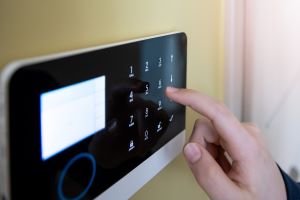
There’s no such thing as being “too safe,” especially at home. While the availability of relatively low-cost home security systems has never been greater, their different “bells and whistles” require informed decision-making.
Thanks to a wide range of options and providers, no two security systems are alike, with some featuring an array of sensors alerting to the presence of a possible intruder and others offering 24/7 monitoring by a third-party security services provider prepared to trigger an emergency response. Some systems are hardwired; others are wirelessly enabled. Differences exist insofar as control panels, hardware maintenance, software updates and system upgrades.
Making the right decision depends on a homeowner’s security needs and budget. The good news is that today’s integrated systems are more comprehensive and easier to use, with a high degree of automation embedded in the control panel or wireless application. While no security system is fool-proof, evidence of a well-secured environment often is enough to frighten off would-be burglars.
For homeowners looking to invest in a topnotch home security system, a best practice is to turn to the professionals. Large residential security system providers offer a range of different packages, with motion detectors and smoke/heat detectors, in addition to upgraded window and door sensor security features.
In discussions with providers, ask if the alarm control panel can handle the addition of supplementary sensors in the future covering a wider expanse of the home and exterior perimeter. For example, can these motion and smoke/heat detectors be installed down the line and be integrated into the security system? If this is the case, the purchase of a larger control panel may be advisable.
It’s also important to ensure the additional surveillance cameras and recording devices are compatible with the security monitoring company’s software. Depending on the provider, some surveillance systems record suspicious activities in real time, alerting homeowners and the monitoring company of an actual intruder and not a false alarm, instantly triggering an emergency response.
To maintain superior performance, routine maintenance is needed. Although most security monitoring companies perform daily diagnostics, the system may not function at optimum capability. Like home smoke detectors, intrusion detection sensors have a lifespan from seven to ten years. An example involves the deployment of passive infrared motion sensors, which are designed to detect thermal changes in a specific area. If the sensor is not functioning properly, the differential in thermal energy will not be detected and fail to trigger the alarm.
To troubleshoot a potential fault, ask the monitoring company if it provides yearly on-site maintenance. Determine if the maintenance personnel will verify the alarm is communicating properly and all wires and connectors are free of corrosion, due to temperature and humidity fluctuations and dust. Tests should be run on the detectors and sensors to ensure proper performance and, if functioning poorly, should be repaired or replaced. Also ask the provider how often the company updates its software and if the updates are automatic. Outdated software is a cybersecurity risk.
In recent years, the home security market has been flooded with inexpensive smart surveillance cameras and doorbells that connect to the internet to warn consumers of a potential security threat. For cost-conscious homeowners, there is value in these devices, when compared to homes without any security devices.
Nevertheless, a professionally monitored hardwired or wireless system with a full array of sensors transmitting data to a central control panel is a more reliable solution, as it will simultaneously trigger an alarm and a notification to the homeowner from the monitoring company. Aside from greater peace of mind, the higher cost may be offset by an insurance premium credit, depending on the insurer.
Jerry Scaini is a Senior Risk Consultant for Chubb Personal Risk Services’ Risk Consulting Group.
The opinions and positions expressed are the authors’ own and not those of Chubb. The information and/ or data provided herein is for informational purposes only and is not a substitute for professional advice. Insurance coverage is subject to the language of the policies as issued.